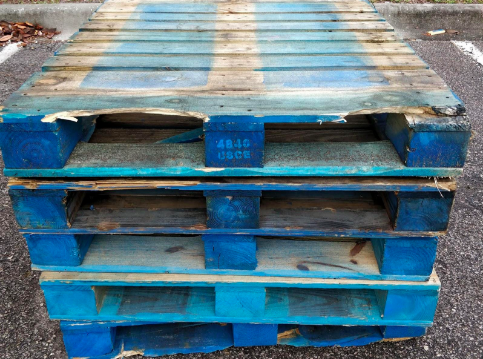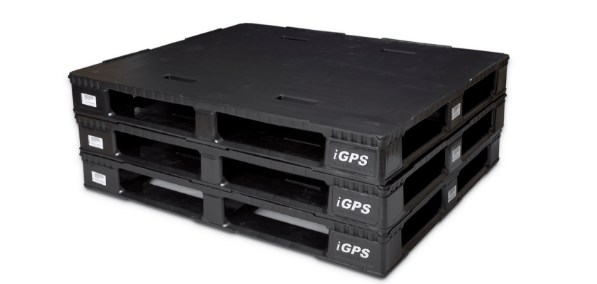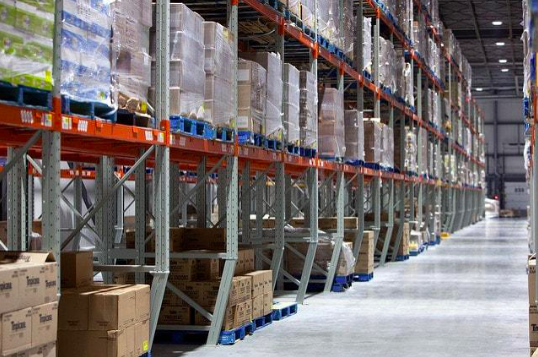Products shipped through cold chain logistics are diverse. They include steaks, salads, and life-saving vaccinations. One thing they have in common is enough value to justify the expense of maintaining the cold storage and refrigerated vehicles required to ship them. With each product, a mistake as simple as taking too long to load or unload product can raise temperatures and ruin cold chain goods, wasting the money spent preparing and transporting the products or even inadvertently exposing customers to unsafe or ineffective products. In cold chain management, mistakes put profits and even lives at risk. Unfortunately, not every mistake can be spotted by paying careful attention to a thermometer.
In 2010, a recall of a Tylenol product was linked back to wood pallets contaminated with 2,4,6-tribromoanisole (TBA), a chemical compound that has been known to ruin food products and is more commonly known as “cork taint” for its tendency to ruin wine. The chemical is believed to originate from the breakdown of a related compound called 2,4,6-tribromophenol by mold and fungi found in wood (in this case, the wood pallets the Tylenol was shipped on), and it’s not the only chemical that can break down this way. Common chlorine bleach used to sanitize facilities can also break down into 2,4,6 TBA and make goods unfit for consumption. Wood pallets in any supply chain can cause this type of contamination, but due to issues with moisture–which tends to encourage mold growth–cold chains are at an increased risk of this and other issues.
Wood Pallets Bring Contaminants into Cold Chain Logistics

Products like medicines, produce, eggs, and meats that rely on cold chains to get them to customers must avoid contamination and cross contamination while also remaining cool. Unfortunately, wood pallets provide a vector for several different types of contamination:
- Microbial: Fungi (including mold) is just one type of living contaminate. Bacterial contamination is a constant concern in the food supply chain and is the culprit in two currently ongoing outbreaks of foodborne illness: an E. coli outbreak in romaine lettuce and a salmonella outbreak linked to eggs. While neither of these outbreaks originated in wood pallets, bacteria and fungi are easily transported in wood, which can help spread them through the cold chain and may also make the original source of the contamination harder to isolate.
- Chemical: Wood treatments used to sanitize pallets rely on wood’s absorbency to be effective. Unfortunately, these same wood treatments may be unsafe for use around sensitive goods or may be broken down into a contaminating chemical (as was the case in the Tylenol recall). The porosity of wood also means it may absorb poisonous and caustic chemicals which can contaminate the cold chain as the pallet moves through it.
- Debris: Anyone who has worked with wood pallets for even a short time knows that they often break, splinter, and crack, creating wood debris and loose nails that litter food handling and storage areas. Fragments of wood—and all that they carry, including bacteria—can even end up in product, while large debris and nails can injure employees and damage product packaging.
Cooling temperatures condense moisture in the air, which then collects on surfaces like the decks of wood pallets and is absorbed.
All of these issues are present wherever wood pallets are used. A wood pallet that has absorbed chlorine bleach is a hazard whether it’s in cold storage or a grocery store’s back room. However, the cold chain is especially prone to these problems. Cooling temperatures condense moisture in the air, which then collects on surfaces like the decks of wood pallets and is absorbed. This moisture provides the environment needed to start microbial growth, and has the unfortunate side effect of causing a wood pallet to deteriorate more quickly.
Given the sensitivity of product in both the food and pharmaceutical cold chains, wood pallets pose a significant risk to product, customers, a company’s reputation, and even profit margins. Plastic platforms are now available that mitigate these risks and boost operational efficiency, making them the clear choice for cold chains.
Non-Absorbent Plastic Pallets Close Contamination Vectors

Plastic pallets have many benefits over wood platforms, but one of the biggest is the fact that plastic is a non-digestible material that won’t absorb or support microbial colonies on its own, helping to prevent bacteria and fungi from contaminating the cold chain. It has several other advantages when used in cold chains:
- Easy to Sanitize: As a non-porous material, plastic is naturally more hygienic than wood, and sanitizing the pallets after use is simple and doesn’t require harsh chemicals. This is an important feature when there is a risk that the chemicals used to sanitize a pallet may contaminate the product or may degrade into a contaminate under the right conditions.
- Durable: High-quality plastic pallets are more durable than wood and are able to make 80 to 100 trips before replacement. A reusable wood pallet, on the other hand, will make only 15 to 20 trips, deteriorating during the process. A more rugged pallet means fewer splinters and nails in cold rooms and trailers throughout the cold chain, reducing potential sources of contamination–and the need for constant cleanup.
- Trackable: As reusable assets, plastic pallets are equipped with a GS1-compliant Global Returnable Asset Identifier (GRAI). This serial number enables properly equipped cold chain logistic systems to identify individual pallets, ensure proper cold chain custody, and track exceptions.
These unique properties of plastic pallets help prevent product losses in cold chain logistics due to contamination of all types. As a result, using plastic pallets can help prevent illnesses and protect a company’s profits and reputation for quality.
An independent study found that the cost savings just due to more product shipped per load is $0.75-$1.08 per pallet.
The lighter weight of plastic compared with wood also saves pharmaceutical and grocery companies money. Lighter weight equals reduced costs for fuel and optimized loads in which more of the load’s weight is product. An independent study found that the cost savings just due to more product shipped per load is $0.75-$1.08 per pallet. Companies can further reduce operational cost by choosing a plastic pallet pooling program to manage their pallets, ensuring a reliable supply of sanitized pallets at production centers.
To lower your Total Cost of Business (TCOB) with the iGPS pallet while offering increased safety to your workers and guaranteed hygiene and savings to both your retail partners and consumers, give our team a call at 1-800-884-0225, email a specialist at switch@igps.net, or visit our contact page.
Image 1: Flickr CC user Walmart



